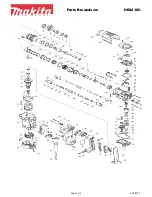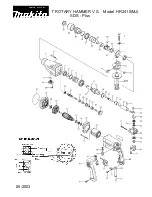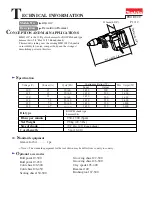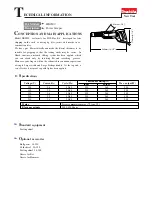
3
EN
Operating manual – cordless multi-function tool PMTS 10-20V
General Power Tool Safety Warnings – Power tool
use and care
•
Do not force the power tool. Use the correct power tool
for your application.
The correct power tool will do the
job better and safer at the rate for which it was designed.
•
Do not use the power tool if the switch does not turn it
on and off.
Any power tool that cannot be controlled with
the switch is dangerous and must be repaired.
•
Disconnect the plug from the power source and / or
the battery pack from the power tool before making
any adjustments, changing accessories, or storing
power tools.
Such preventive safety measures reduce the
risk of starting the power tool accidentally.
•
Store idle power tools out of the reach of children and
do not allow persons unfamiliar with the power tool or
these instructions to operate the power tool.
Power
tools are dangerous in the hands of untrained users.
•
Maintain power tools. Check for misalignment or
binding of moving parts, breakage of parts and any
other condition that may affect the power tool’s
operation. If damaged, have the power tool repaired
before use.
Many accidents are caused by poorly
maintained power tools.
•
Keep cutting tools sharp and clean.
Properly maintained
cutting tools with sharp cutting edges are less likely to
bind and are easier to control.
•
Use the power tool, accessories and tool bits etc. in
accordance with these instructions, taking into
account the working conditions and the work to be
performed.
Use of the power tool for operations different
from those intended could result in a hazardous situation.
General Power Tool Safety Warnings – Service
•
Have your power tool serviced by a qualified repair
person using only identical replacement parts.
This will
ensure that the safety of the power tool is maintained.
General Battery Pack / Charger Safety Warnings
•
Use power tools only with specifically designated
battery packs.
Use of any other battery packs may create
a risk of injury and fire.
•
When battery pack is not in use, keep it away from
other metal objects, like paper clips, coins, keys, nails,
screws or other small metal objects, that can make a
connection from one terminal to another.
Shorting the
battery terminals together may cause burns or a fire.
•
Recharge only with the charger specified by the
manufacturer.
A charger that is suitable for one type of
battery pack may create a risk of fire when used with
another battery pack.
•
Do not charge other battery packs.
The charger is only
suitable for use with the supplied battery pack and with
the voltages specified in the technical data. Otherwise,
there is a risk of fire and explosion.
•
Under abusive conditions, liquid may be ejected from
the battery.
Avoid contact. If contact accidentally occurs,
flush with water. If liquid contacts eyes, additionally seek
medical help. Liquid ejected from the battery may cause
irritation or burns.
•
In case of damage and improper use of the battery,
vapours may be emitted.
Provide for fresh air and seek
medical help in case of complaints. The vapours can
irritate the respiratory system.
•
Do not open the battery.
There is danger of a short
circuit.
•
Do not short-circuit the battery.
There is danger of
explosion.
•
Batteries must not be exposed to mechanical impacts.
•
Protect electrical parts against moisture. To prevent an
electric shock, never immerse them in water or other
liquids during cleaning or operation.
Never hold the
charger under running water. Please observe the
instructions for cleaning and maintenance.
•
The charger is only suited for indoor use.
•
Keep the charger clean.
Contamination entails a risk of
electric shock.
•
Do not operate the charger on highly combustible
ground (e.g. paper, textiles etc.) or in an inflammable
environment.
The heat generated by the charger during
charging entails a risk of fire.
•
Only use the charger for charging the battery.
The
charger must not be used as power supply for the power
tool.
Safety warnings for multi-function tools
•
Hold the power tool by its insulated gripping surfaces
when performing an operation where the insertion tool
may contact hidden wiring.
Contacting a live wire might
energize exposed metal parts of the device and lead to an
electric shock.
•
Only use the power tool for dry sanding.
Water entering
an electrical appliance increases the risk of electric shock.





































